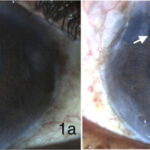Malignant gastroenteropancreatic neuroendocrine tumors (GEP-NETs) are a group of rare and complex cancers arising from neuroendocrine cells in the gastrointestinal (GI) tract and pancreas. These tumors can be slow-growing or aggressive, significantly affecting patient prognosis. Early diagnosis and treatment play a crucial role in managing this condition.

What Are Gastroenteropancreatic Neuroendocrine Tumors?
GEP-NETs originate in the neuroendocrine cells of the digestive system, which regulate various physiological functions by releasing hormones. These tumors are classified based on their location, differentiation, and functionality:
- Gastric NETs (stomach)
- Small Intestinal NETs (jejunum, ileum, duodenum)
- Colorectal NETs (colon and rectum)
- Pancreatic NETs (pNETs)
- Appendiceal NETs
Causes and Risk Factors
While the exact cause of GEP-NETs remains unclear, certain factors contribute to their development:
- Genetic Mutations: Inherited conditions like Multiple Endocrine Neoplasia type 1 (MEN1) and Von Hippel-Lindau (VHL) syndrome increase the risk.
- Family History: A history of endocrine or gastrointestinal cancers may elevate susceptibility.
- Age and Gender: Most GEP-NETs occur in individuals over 50 years old, with varying prevalence among genders.
- Chronic Conditions: Conditions like chronic atrophic gastritis and Zollinger-Ellison syndrome may predispose individuals to NET formation.
Symptoms of Malignant GEP-NETs
Symptoms vary based on tumor location and hormone secretion levels. Common signs include:
- Gastrointestinal Distress: Abdominal pain, bloating, nausea, vomiting
- Carcinoid Syndrome: Flushing, diarrhea, wheezing (due to serotonin secretion)
- Hypoglycemia or Hyperglycemia: In pancreatic NETs
- Jaundice: If bile duct obstruction occurs
- Unintentional Weight Loss: Due to tumor burden or metabolic disturbances
Diagnosis and Staging
Diagnosing malignant GEP-NETs involves a combination of imaging, blood tests, and biopsy:
Diagnostic Tests:
- Biomarker Tests: Chromogranin A (CgA), serotonin, and 5-HIAA urine test
- Imaging: CT scan, MRI, PET scan (DOTATATE PET for somatostatin receptor imaging)
- Endoscopic Ultrasound (EUS): For pancreatic and gastric NETs
- Biopsy and Histopathology: To determine tumor grade and differentiation
Treatment Options for Malignant GEP-NETs
Treatment strategies depend on tumor location, grade, and spread.
Surgical Interventions
- Curative Resection: Preferred for localized tumors
- Debulking Surgery: Removes large tumor masses to alleviate symptoms
- Liver Resection or Transplant: For hepatic metastases
Medical Therapies
- Somatostatin Analogues (SSAs): Octreotide, lanreotide (control hormone secretion)
- Targeted Therapy: Everolimus, sunitinib (for pancreatic NETs)
- Peptide Receptor Radionuclide Therapy (PRRT): Lutetium-177 DOTATATE for somatostatin receptor-positive tumors
Chemotherapy and Radiotherapy
- Chemotherapy: Used in aggressive, high-grade neuroendocrine carcinomas
- External Beam Radiation: Palliative care for advanced cases
Prognosis and Survival Rates
The prognosis depends on tumor grade and stage. Well-differentiated tumors often have a favorable outcome, whereas poorly differentiated neuroendocrine carcinomas (NECs) have a more aggressive course.
- Localized GEP-NETs: 5-year survival rate exceeds 90%
- Regional Spread: Survival rates range from 50-80%
- Distant Metastases: Survival rates drop below 40%
Malignant gastroenteropancreatic neuroendocrine tumors are complex cancers requiring multidisciplinary management. Early detection, personalized treatment strategies, and advancements in targeted therapies have significantly improved patient outcomes. Regular follow-ups and innovative research continue to enhance survival rates and quality of life for affected individuals.

